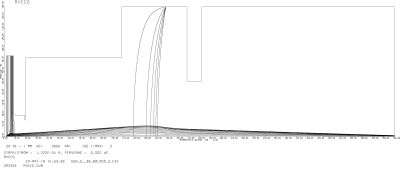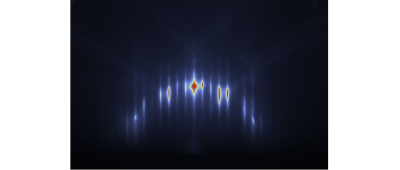RHEED Guns
15 kV
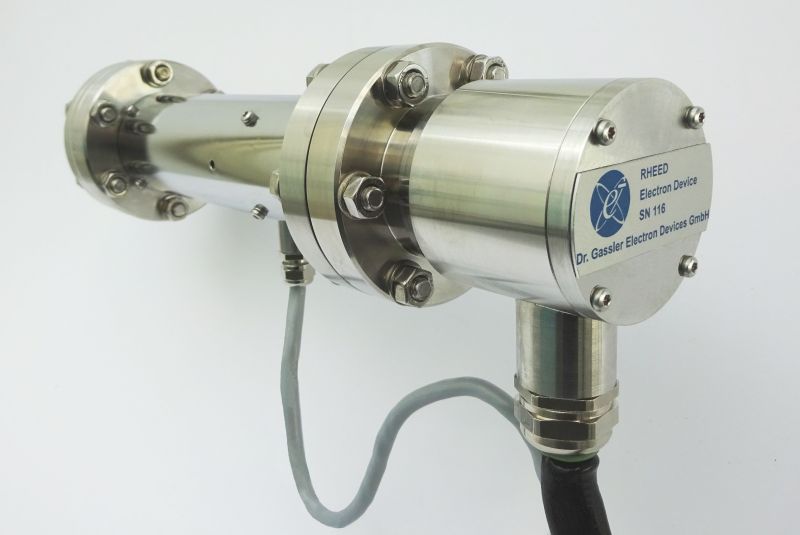
- DN40CF mounting flange
- 340 µA max current (up to 1mA on request)
- 242 mm length
- up to 15 kV energy
- more info
20 kV

- DN40CF mounting flange
- 250 µA max current (up to 1mA on request)
- 242 mm length
- up to 20 kV energy
- more info
30 kV
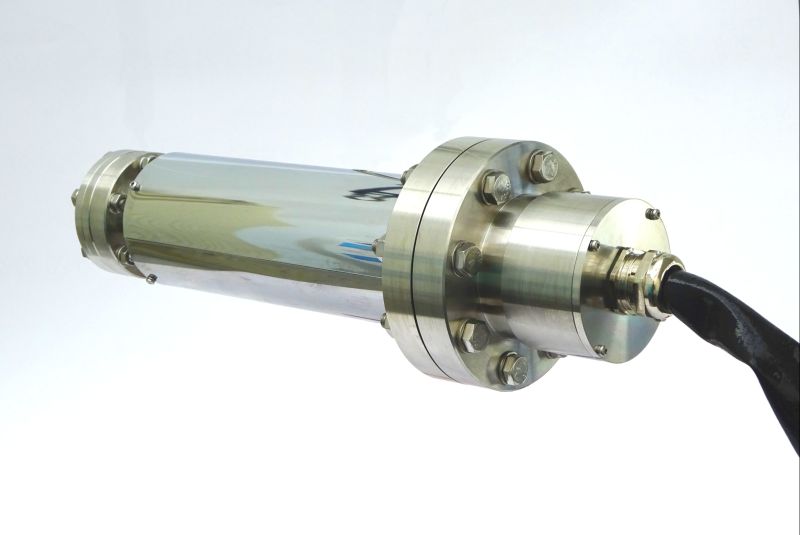
- DN40CF mounting flange
- 170 µA max current (up to 1mA on request)
- 318 mm length
- up to 30 kV energy
- more info

Semi-
HiPressure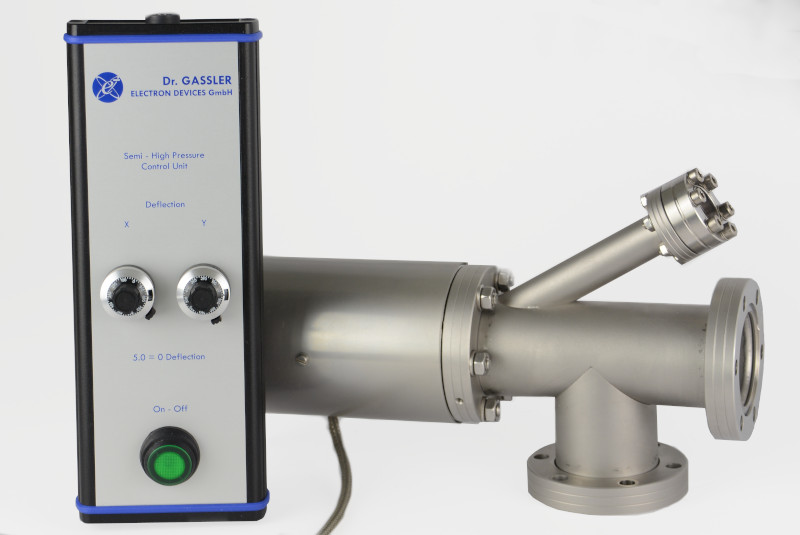
- add-on for 15/20/30 REG
RHEED Guns - DN40CF mounting flange
- factor 1000 pressure reduction
- Beam alignment aperture
- more info

HiPressure
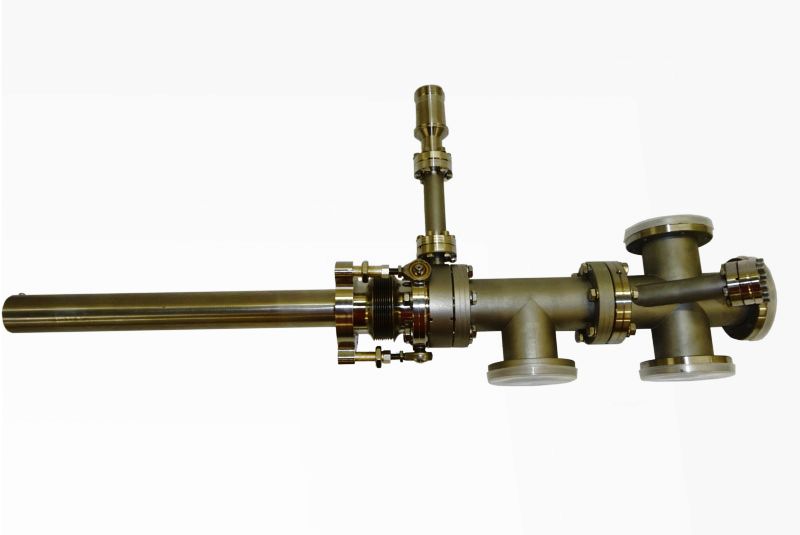
- add-on for 15/20/30 REG
RHEED Guns - DN40CF mounting flange
- factor 200.000 pressure reduction
- Beam alignment aperture
- more info
RHEED Accessories
- iRHEED camera and
software analysis system - RHEED Screens and Screen Holder
- Shielding, Shutter, Viewports
- specialities
- more info
What makes Dr.GASSLER RHEED Systems unique for the user?
Backed by decades of experience and Know-How in the design of professional Cathode Ray Tubes we have perfortmed intensive electron-optics simulations to achieve unmatched electron beam performance and characteristics. Our huge catalogue of high precision parts for electron guns allows us to realize optimized designs at reasonable costs with outstanding performance.
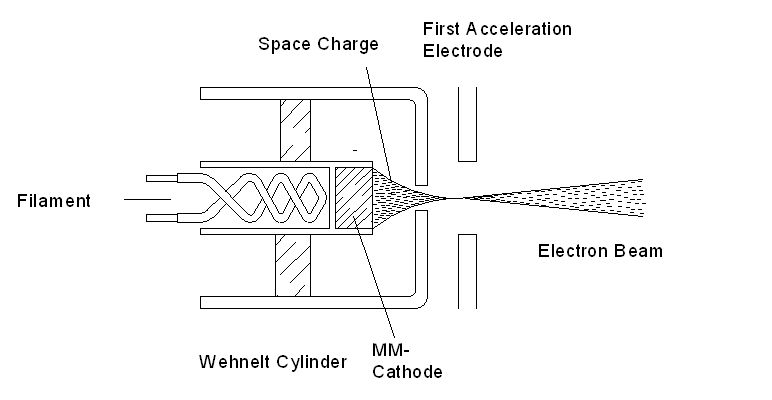
The electron source in our RHEED guns are so-called Mixed-Metal-Type cathodes. They consist of a porous tungsten pellet mounted on top of a metal sleeve with an indirect heater inside. Distributed inside the pores of the pellet is a mixture of Ba-Ca-Al oxide.
The surface of the tungsten pellet is additionally coated with a layer of Osmium and Ruthenium. After the activation process of the cathode, a thin layer of barium on-top of the surface reduces the work function down to approx. 2 eV. This low work-function allows electrons to be emitted at a temperature of just below 1000°C.
There are several advantages to use a Mixed-Metal-Type cathode in a RHEED system, which overcome some of the obstacles of an electron source in form of a direct heated Tungsten wire.
Our Mixed-Metal-Type cathodes were developed originally for Travelling Wave Tubes, which are amplifier tubes to be used onboard of satellites. This application requires much higher currents compared to what is needed for a RHEED pattern. Especially servicing, like exchanging a filament is almost impossible in space. This is the reason why these cathodes are designed to have a lifetime of more than 15 years at 24/7 operation. Therefore a change of the electron source because of degradation of a direct heated wire is not necessary in our RHEED system.
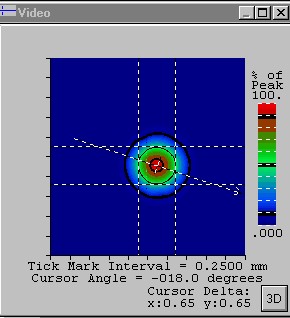
An important benefit of a Mixed-Metal-Type cathode is the sharp energy distribution of the resulting electron beam. The cathode is mounted inside a Wehnelt cylinder with a very small aperture of only 0.3 mm. When the cathode is operating, the strength of the electron beam is controlled through a negative voltage on the Wehnelt cylinder.
A space charge of electrons is formed above the surface of the cathode, just below the aperture of the Wehnelt. In this space-charge an equilibrium is set up between emitted and absorbed electrons right above the cathode surface.
As the cathode is designed to deliver a high current, only a small fraction of the emitted electrons is necessary to pass through the aperture towards the various electrodes which form the electron-optic lenses. The energy distribution of the electrons is therefore very sharp and is ideal for a brilliant, high contrast RHEED pattern.
The electron gun structure with all its electrodes is made of a series of high precision parts. These parts are fixed together by insulating glass rods. In order to correct the electron beam for the smallest deviations and to optimize the beam shape we integrate individual correction magnets. One correction magnet is mounted at the entrance of the focus cylinder, the other one inside the big anode cylinder.
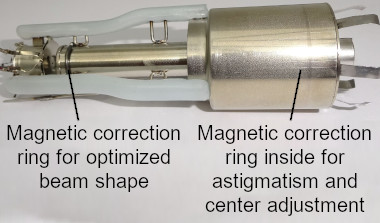
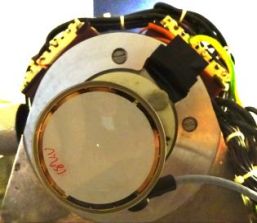
During manufacturing the electron gun is sealed inside a glass tube with a phosphor front-plate and is evacuated to UHV level.
The operator lights up the tiny “picture tube” and checks with a microscope the shape of the electron beam.
With a ring of correction coils outside the vacuum he can generate correction fields (dipole, quadrupole, hexapole ) and optimize the shape of the beam profile. Necessary corrections are “frozen” into the magnetic rings permanently.
To direct the electron beam to the point of interest on the substrate two sets of deflection coils are mounted perpendicular to each other on the outside of the vacuum tube of the RHEED gun. The sensitivity of the deflection coils is enhanced by wrapping a special µ-metal shielding around. The possible deflection angle is practically only limited by the diameter and length of the entrance port to the chamber. On a DN40 CF flange and a typical length of the tube of 50 mm, the possible deflection angle is up to 11° in both directions.
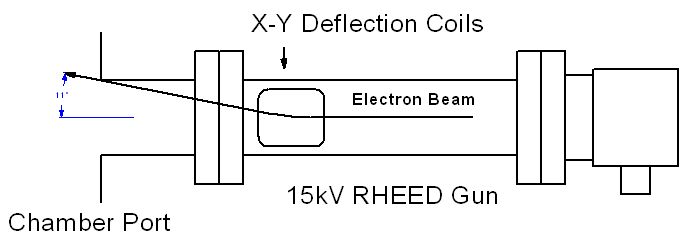
All values of the deflection can be seen directly on the display, so it's easy to direct the beam on the substrate to fix positions repeatable. Like all other parameter once determined positions can be saved and reloaded.
Asides the usual X-Y Deflection our RHEED guns are all equipped with a High Angle Beam Rocking function.
What is Beam Rocking?

1) The unrocked electron beam passes through the magnetic field of a vertical deflection coil (right side) and hits the substrate under a certain angle (black line) given by the coil characteristics and the deflection current set.
2) Before the vertical deflection coil an additional set of coils is mounted, the Beam Rocking coils. When the electron beam is deflected already by the beam rocking coil, it enters the vertical deflection coil at a shifted position. If one wants to redirect the beam to the same position on the substrate with the vertical deflection coil, the resulting incident angle to the surface will be bigger (red line).
The electron beam can be switched on and off by simply pressing a button on the Remote Control or can also be initiated via the USB or optional LAN TCP/IP interface. The control voltage of the electron beam at the Wehnelt cylinder will be set to block or open the aperture. With a small software program you can trigger this also according your requirements. There is no mechanics involved at all.
Electron beams are very sensitive against any external magnetic fields. Starting from the earth magnetic field to every pump, motor, magnetic material and especially all the unknown magnetic fields from the labs above and below your chamber create disturbances to the electron beam. The lower the energy of the electrons is, the higher the effect of magnetic disturbances will be.
In order to reduce the vulnerability of the electron beam to a minimum, we have shielded our RHEED guns with a high efficient, thick µ-metal shielding. To limit the free, unprotected path from the end of the RHEED Gun into the chamber, we offer additional, customized shielding. Developed once for our highly sensitive Cathode Ray tubes for professional applications, we have all the necessary Know-How to treat µ-metal in the proper way and to achieve a maximum shielding effect.
The heart of our power supply is a state of the art Microprocessor based control board, which communicates via optical fibers with the various, galvanically isolated high voltage modules to supply all the necessary voltages for the RHEED gun.
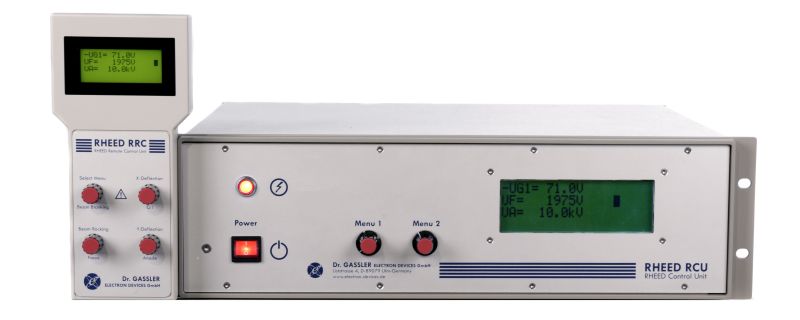
The Power Supply is built into a single low profile 19” housing and is connected to the RHEED Gun via a 10m long cable as standard.
An additionally Safety Switch can be used as an interlock. If the Safety Switch is open, all High Voltages are set to Zero and filament is off.
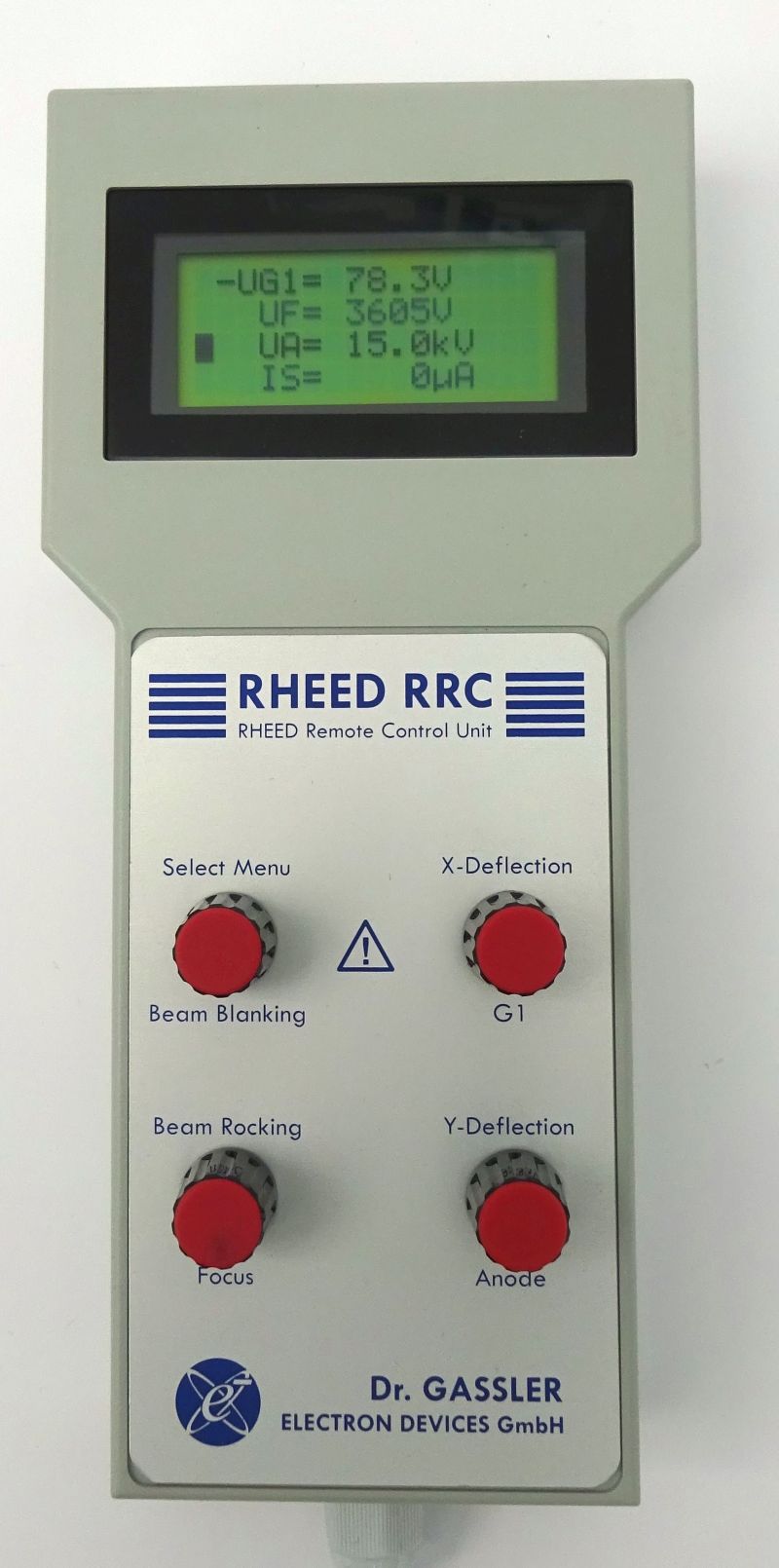
Each parameter can be addressed either at the power supply directly or via a separate Remote Control. All individual settings are displayed on the display of the Power Supply and the Remote Control directly in front of the user. So its very easy to adjust the beam for best performance and locate it to the area of interest.

You can SAVE all parameter of a certain setting and LOAD them next morning again. The software takes care for a safe re-arrangement of all voltages, so a risk of sudden voltage changes and therefore possible arcs is minimized.
The fully digital setup allows it to control all parameter also either via an USB or an optional LAN TCP/IP interface through an external PC. The necessary control software is already integrated and can be easily implemented onto your system. For details see the manual in the download section.
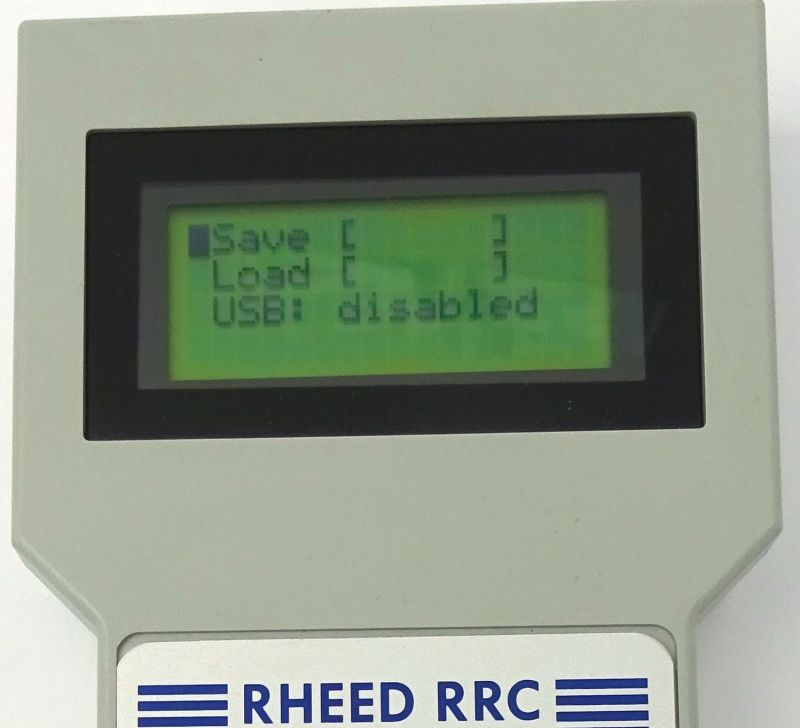
You can SAVE all parameter of a certain setting and LOAD them next morning again. The software takes care for a safe re-arrangement of all voltages, so a risk of sudden voltage changes and therefore possible arcs is minimized.
RHEED System 15 kV - REG15
Technical Data:
| Energy Range | 7-15 kV |
| Max. Current | 340 µA (up to 1mA on request) |
| Beam Spot Size | <70 µm |
| Focus Lens | electrostatic |
| Deflection | magnetic X-Y Beam Rocking Beam Blanking |
| Mounting Flange | DN40CF |
| Bakeout Temp. | 200°C |
| Dimensions | length 242 mm |
RHEED System 20 kV - REG20
Technical Data:
| Energy Range | 7-20 kV |
| Max. Current | 250 µA (up to 1mA on request) |
| Beam Spot Size | <70 µm |
| Focus Lens | electrostatic |
| Deflection | magnetic X-Y Beam Rocking Beam Blanking |
| Mounting Flange | DN40CF |
| Bakeout Temp. | 200°C |
| Dimensions | length 242 mm |
RHEED System 30 kV - REG30
Technical Data:
| Energy Range | 10-30 kV |
| Max. Current | 170 µA (up to 1mA on request) |
| Beam Spot Size | <70 µm |
| Focus Lens | electrostatic |
| Deflection | magnetic X-Y Beam Rocking Beam Blanking |
| Mounting Flange | DN40CF |
| Bakeout Temp. | 200°C |
| Dimensions | length 318 mm |
Semi-HiPressure add-on for 15/20/30 REG RHEED Guns
Technical Data:
| Pressure reduction through single differential pumping | Factor 1000 |
| Stable emission with add-on at chamber pressure | 1x10-4 mBar |
| Beam alignment through aperture in phosphor coated disk | |
| Deflection | magnetic X-Y Beam Rocking |
| Mounting Flange | DN40CF |
| Bakeout Temp. | 200°C |
| Dimensions (total length of add-on) | 252 mm |

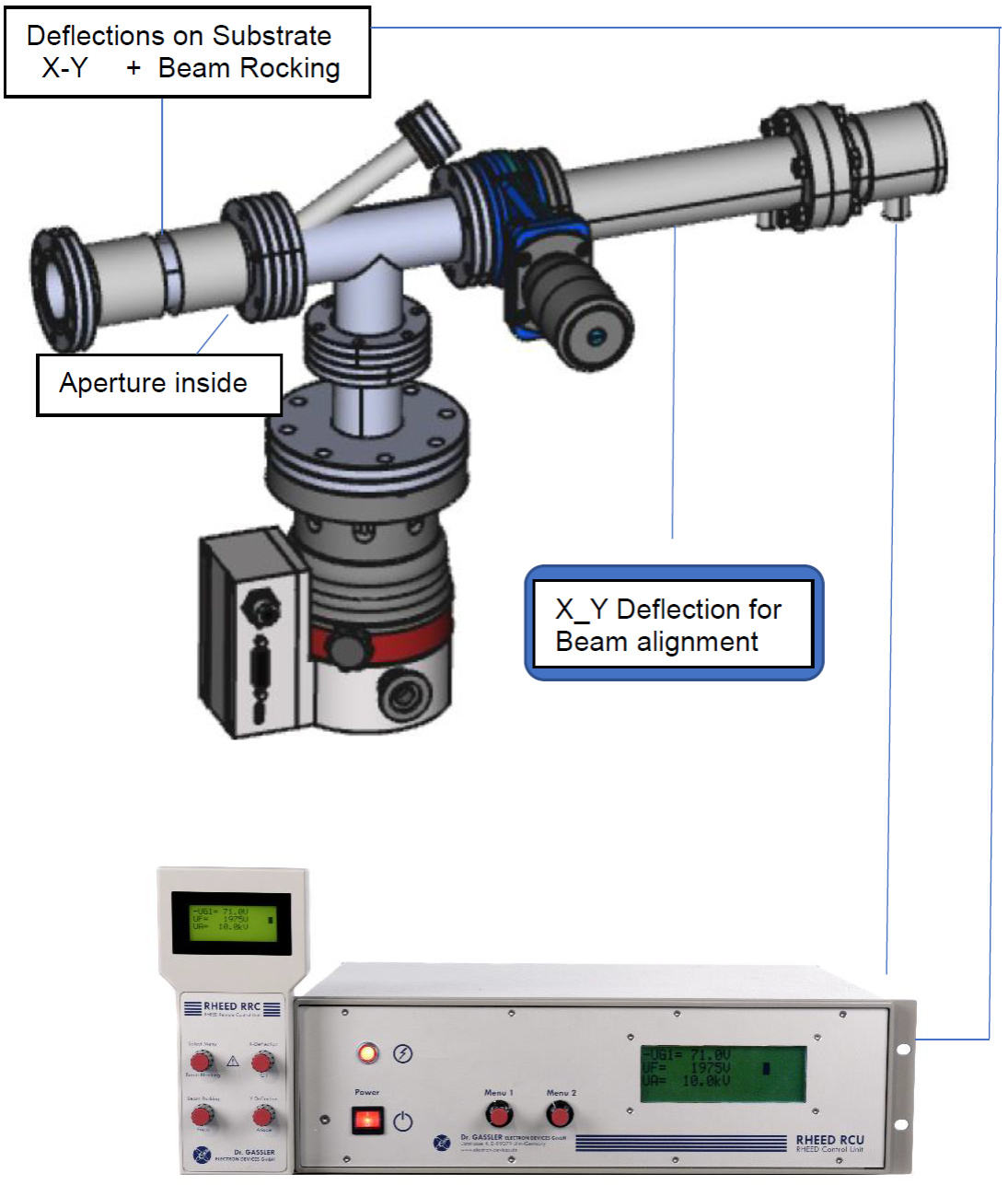
The add-on Semi-HiPressure unit limits the gasflow from the UHV chamber towards the electron gun through a small aperture. An additionally mounted Turbomolecular pump between aperture and electron gun can reduce the pressure level by a factor of approx. 1000.
Therefore a recommended pressure of 1 x 10-7 mBar at the electron gun allows a pressure in the chamber of 1 x 10-4 mBar.
The gate valve serves as an additional protection for the electron source, until the recommended pressure is reached and the RHEED gun can be powered on.
When opening the gate valve at the recommended pressure level and operating the RHEED electron gun, the electron beam hits a built in phosphor coated disk and a small aperture in centre.
The electron beam can be adjusted with a separate Deflection Control Unit to pass precisely through the small aperture.
The alignment of the beam through the phosphor coated disk can be easily controlled through a side exit, ending with a DN16 viewport mounted in a 30° angle.
To direct the electron beam to the point of interest on the substrate two sets of deflection coils are mounted perpendicular to each other on the outside of the vacuum tube in front of the CF40 T-piece. The sensitivity of the deflection coils is enhanced by a special µ-metal shielding around. The possible deflection angle is practically only limited by the diameter and length of the entrance port at the chamber. On a CF40 flange and a typical length of the tube to the chamber of 50 mm, the possible deflection angle is up to 11° in both directions.
Additional to the X-Y deflection the add-on Semi-Hi-pressure unit is equipped with a High angle Beam Rocking as a standard.
The entire add-on Semi-HiPressure unit is shielded with a highly efficient µ-metal shielding. Any effects from the earth magnetic or other magnetic sources field can be minimized.
All values of the deflection can be followed on the display, so it's easy to direct the beam on the substrate to fix positions repeatable. Like all other parameter once determined positions can be saved and reloaded.
HiPressure add-on for 15/20/30 REG RHEED Guns
Technical Data:
| Pressure reduction through dual differential pumping | Factor 200.000 |
| Stable emission with add-on at chamber pressure | 5x10-2 mBar |
| Beam alignment through aperture in phosphor coated disk | |
| Deflection | magnetic X-Y Beam Rocking |
| Mounting Flange | DN40CF |
| Bakeout Temp. | 200°C |

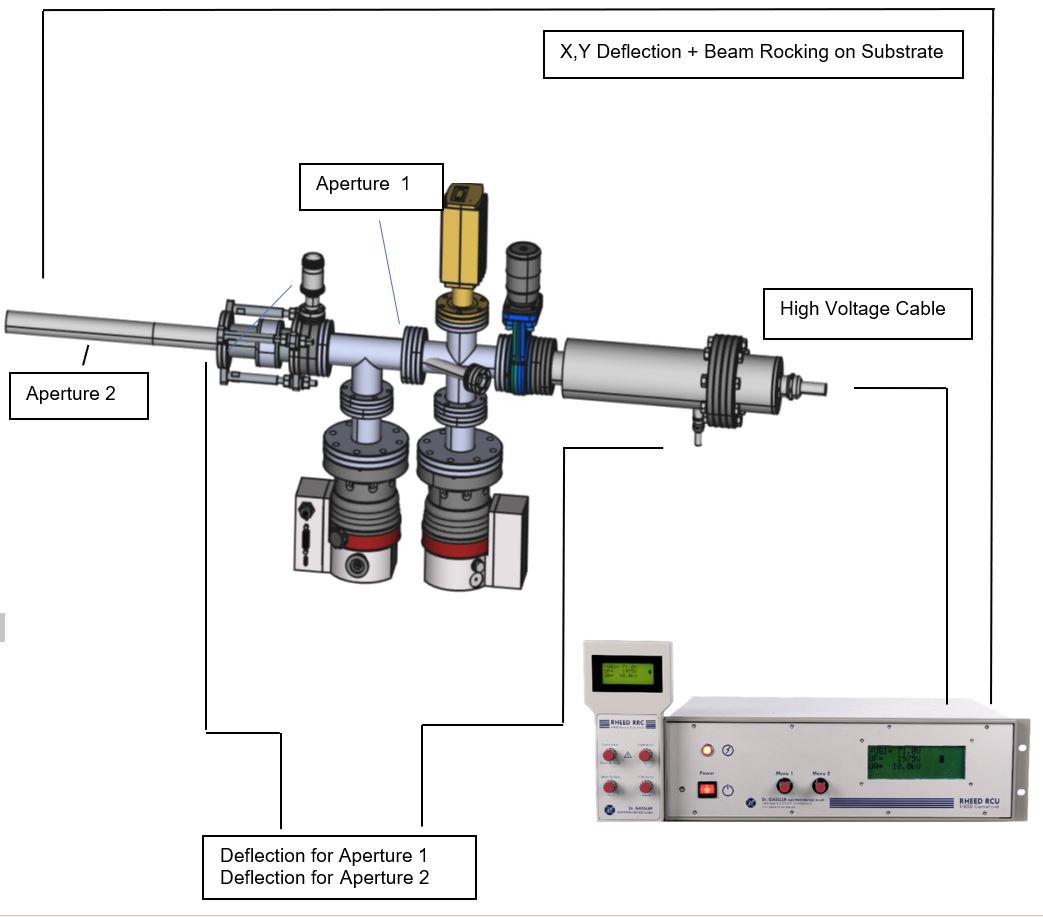
The add-on HiPressure unit limits the gasflow from the UHV chamber towards the electron gun through two small apertures. Additionally mounted Turbomolecular pumps between the apertures and electron gun can reduce the pressure level by a factor of approx. 200.000.
Therefore a recommended pressure of 1 x 10-7 mBar at the electron gun allows a pressure in the chamber of 5 x 10-2 mBar.
The gate valve serves as an additional protection for the electron source, until the recommended pressure is reached and the RHEED gun can be powered on.
When opening the gate valve at the recommended pressure level and operating the RHEED electron gun, the electron beam hits first a built in phosphor coated disk with a small aperture in centre.
The electron beam can be easily adjusted with a separate Deflection Control Unit to pass precisely through the small aperture.
A second aperture is built in close to the end of the extension part, which reaches into the chamber. Integrated magnetic shieldings protect the electron beam in full length from distortion. With an additional set of X,Y- coils one can adjust the beam precisely also through the second aperture.
To direct the electron beam to the point of interest on the substrate X,Y deflection and Beam Rocking coils are mounted shortly before the beam exits the extension part. The sensitivity of the deflection coils is enhanced by a special µ-metal shielding.
Additional to the X-Y deflection the Add-on Hi-pressure unit is equipped with a tilt bellow with alignment studs as a standard to allow the best incident angle.
The entire Add-on HiPressure unit is shielded with a highly efficient µ-metal shielding. Any effects from the earth magnetic or other magnetic sources field can be minimized.
All values of the deflection can be followed on the display, so it's easy to direct the beam on the substrate to fix positions repeatable. Like all other parameter once determined positions can be saved and reloaded.
RHEED References
RHEED components and RHEED Systems sold to the community
+series of equipment manufacturer who integrate our components and systems
Acad. of Science Warsaw
Boston College
Caltech Pasadena
CNRS Grenoble
CNRS Marseille
CNRS Nancy
CNRS Paris
CSIC Madrid
DESY Hamburg
Diamond Oxford
DSI Singapore
Helmholtz Potsdam
Ioffe Inst. St.Petersburg
KIT Karlsruhe
Lausanne Ecole Polytechnique
MPI Stuttgart
Paul Drude Institute
Stanford Linear Accelerator
Tata Institute Hyderabad
University Aarhus
University Augsburg
University Bangkok
University Barcelona
University Berlin
University Bochum
University Budapest
University Darmstadt
University Frankfurt
University Giessen
University Greifswald
University Halle
University Hamburg
University Hannover
University Hebei
University Heraklion
University HKUST Hongkong
University Houston
University Jena
University Kaiserslautern
University Lancaster
University Lanzhou
University Leipzig
University Lille
University Linz
University Madrid
University Milano
University Monash
University Montpellier
University Mumbai
University Munich
University of Pennsylvania
University of Texas
University Oslo
University Oxford
University Paderborn
University Peking
University Pisa
University Regensburg
University Reykjavik
University Singapore
University Triest
University Twente
University Warschau
University Wien
University Wittenberg-Halle
University Würzburg
University Zhejiang
Weizmann Institute


